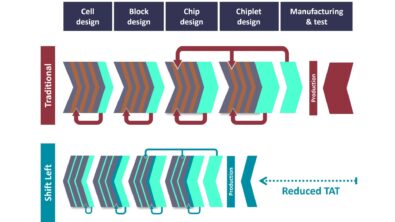Eye charts aren’t the answer to analog design reliability…
By Hossam Sarhan and Alexandre Arriordaz – Mentor, A Siemens Business
Adding Calibre PERC automated reliability checks to the analog design and verification flow enables analog designers to consistently deliver designs on schedule, with the assurance they will perform as intended for the lifetime of the product.
Analog designers! You, the folks over there who are squinting and cleaning your glasses. How long did it take you to visually inspect your last layout? Are you confident you caught every instance where your design might be susceptible to effects that would reduce performance, reliability, and product life? Yeah, I thought not. That’s because it’s really hard, especially as layouts get more and more complex, and some of the errors get more and more subtle. It’s gone past finding a needle in a haystack—now it’s more like finding a yellow thread in a haystack.
Oh, and did you recheck your design after EVERY design change? It’s okay, nobody does, because who has time for that? We all have delivery schedules to meet, and after all, it was only a minor change. Surely it didn’t affect anything significant in the layout. And if it did, the post-layout simulation will catch it anyway, right?
Well, maybe. And maybe not. You know as well as anyone that some of those effects won’t show up until the chip is in silicon, but there’s only so much time in the day, and you’re careful to use best design practices to try and avoid (or at least minimize) the impact of layout-dependent effects and manufacturing variation. What more can you do?
How about…automating that constraint checking? Admit it, aren’t you sometimes secretly just a little jealous of your digital design counterparts with their automated design rule checking runs? Now you can enjoy many of the same benefits—automated constraint checking is deterministic, meaning it always returns the same results for a given set of inputs. It doesn’t get tired or hungry, it didn’t stay up too late the night before, and its eyesight is always 20-20. Automated constraint checking helps you perform the most complex verification processes with confidence, and ensures the highest possible design reliability.
The other advantage (and it’s a good one) is that automated verification is one part of the evaluation process needed to comply with existing and emerging industry reliability standards, such as ISO 26262 or the RESCAR 2.0 project for automotive electronics.
Interested? Want to learn more about automated constraint checking for analog design, and see a few examples? Download our white paper, Automated constraint checks enhance analog design reliability, and give it a read. Still have questions? We’d be happy to answer them. Just contact us here




